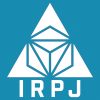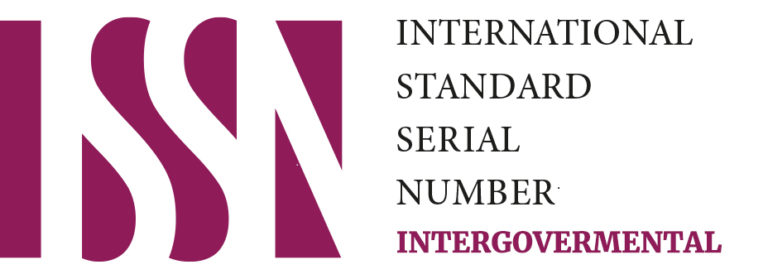ABSTRACT
Objective:
Marital life is closely related to physical, social, and mental well-being. The aim of this study was to determine the reduction in chronic marital life stress among exposed subjects through the emotion re-focus approach.
Methods: The individuals meeting our inclusion criteria were screened with the help of Stockholm Marital Stress Scale. The cognitive assessment was also made with the help of an Abbreviated Mental Test. The subjects were assigned a random number in a double-blind and independent manner, and half of them were provided eight therapeutic sessions lasting 90 minutes for eight weeks. The remaining ones were provided identical service after the entire data collection. All analyses were carried-out in 99.0% confidence interval, 0.01% type-I error and 1.0% type-II error.
Results: A total of 138 subjects with marital life stress were allocated to both testing and control group. Both groups did not differ in social, statistical, and clinical variables. The between-group mean stress score did not differ statistically at baseline (p=0.1), but did differ at the culmination (p<0.001). For control group, the mean stress score changed from 2.8, 99%CI 2.7-2.9 to 2.7, 99%CI 2.6-2.8, p=0.1 between pre-post assessment. For testing group, the mean stress score changed from 2.9, 99%CI 2.8-3.0 to 2.4, 99%CI 2.3-2.5, p<0.001 (diff=17.2%, ES=1.40, R2=0.32) between pre-post assessment. The within-group improvement in stress score among subjects from their own baseline was 0-3.8% among control group and 1.9-30.6% in testing group. The sample power was 99.1%.
Conclusions: Within our strengths and limitations, we may conclude that emotion re-focus may help to overcome chronic conjugal life distress with 0.1% false positive error.
INTRODUCTION
Similar to other mental health issues,1 marital life stress has been studied almost exclusively in few populations.2 However, marital life is liable to be guided heavily by numerous predisposing factors, culturally determined norms, customs, and expectations.3 Not all of these have been adequately studied, such as the context of irregular and shift duty hours. This exposure factor is very relevant for marital life stress because of the possibility of disturbing eating and cooking times, or providing inadequate time for amusement, sexual fulfillment, affection and communication with the partner, reducing participation in family affairs, deriving occupational stress, pressure to meet financial expenses from nagging spousal demands, etc. As an example, the time partners spend together correlates well with marital life quality.4 Many prior studies have shown that marital life stress can be effectively mitigated through existing therapeutic approaches such as emotion re-focus.5 However, given the differences between populations in the aspects mentioned above, the risk of exposure, protection, or therapeutic outcome may differ.6 Thus, following our intention to address factors and populations that are yet to be adequately addressed, we estimated the result of a structured emotion re-focus regimen against conjugal life stress among those exposed to irregular and shift duty hours at a large Industrial set-up in Tehran, Iran.
METHODS
To recruit our participants, we screened all adult married workers, for conjugal life stress, who are working in irregular and shift duty hours for at least six months at a large Petroleum Gas refinery. For this, we used the Stockholm Marital Stress Scale.7 In addition, all participants underwent structured cognitive assessment with the Abbreviated Mental Test. The Stockholm Scale is experimentally valid and has adequate internal consistency and satisfactory construct validity. The Mental Test has an internal reliability of 0.90 and has high sensitivity and specificity.8 Those included were expected to attend the entire regimen (Table-1). Those with a current and a past history of organic mental illness or conflicting treatment (e.g. mood-stabilizers) were excluded.
All included subjects were given a random number in a double-blind and independent manner, and after that, half of them were allocated to a therapeutic regimen of eight sessions lasting 90 mins once every week (Table-1). The remainders were provided identical regimens but after entire data collection. Based on the Type-I error of 0.01%, Type-II error of 0.1%, and the effect size of 0.6 for the group mean difference, 136 subjects for each group was required.
All data were entered into MS-Excel and analyzed appropriately. The descriptive data was estimated by using means, number, frequency, and 99.0% confidence interval (CI). The distribution of stress scores was tested by using Shapiro-Wilk (SW) test. The mean scores were compared between groups for finding a statistical significance of the difference. In addition, within-group change in stress score was also estimated for all individual subjects from their own baseline. The effect size (ES) and the coefficient of determination (r2) were also determined. In addition, posthoc sample power was determined by using means, groups size, and effect size. Ethics permission was obtained from institutional ethics board of Kharazmi University. Informed consent was obtained from all subjects.
RESULTS
A total of 138 subjects with conjugal life stress were allocated to each of the testing and control group. Both groups did not differ in terms of their mean age (32.8, 99%CI 31.8-33.7 and 33.2, 99%CI 32.3-34.1, p=0.2), duration of marriage (6.1, 99%CI 5.2-7.0 and 6.3, 99%CI 5.4-7.2, p=0.3), and similarly in other factors including the number of children, low social-economic status, and being unqualified (p>0.05). For both groups, the SW test was non-significant (p.0.05).
There was no difference in the mean stress score at the baseline between testing and control groups, p=0.1. However, the mean stress score at the culmination differed significantly between the two groups, p<0.001. For the control group, the mean stress score changed from 2.8, 99%CI 2.7-2.9 to 2.7, 99% CI 2.6-2.8, p=0.1 (ES=0.15), between pre-post assessment. Among this group, 53.0% subjects experienced an improvement, in the range of 0 and 3.8%, in their final stress score from their own baseline. For those in the testing group, the mean stress score changed from 2.9, 99%CI 2.8-3.0 to 2.4, 99%CI 2.3-2.5, p<0.001 (diff=17.2%, ES=1.40, R2=0.32) between pre-post assessment. Among this group, all subjects experienced an improvement, in the range of 1.9% and 30.6%, in their final stress score from their own baseline. The estimated sample power in the testing group was 99.1%.
Table 1: Emotion re-focus therapeutic regimen
| Introduction: |
| Describe sessions; develop therapeutic relationship with the recipients; identify emotional conflict issues; feedback; submission of assignment. |
| Identify negative interaction in conflict situations: |
| Recap previous session; evaluate past assignment; discuss interactive negativity during conflicts; feedback; submission of assignment |
| Assessment of unknown underlying emotions: |
| Recap previous session; evaluate past assignment; discuss core negative interaction cycle; feedback; submission of assignment. |
| Redefinition of problem : |
| Recap previous session; evaluate assignment; discuss uncredited feelings; causal interactionism; re-define interaction cycle with particular attention to underlying emotional and attachment needs; feedback; submission of assignment. |
| Promote sense of proximity in emotional withdrawal: |
| Recap previous session; evaluate assignment; addressal of withdrawn partners to improve their engagement; ownership of attachment gaps, hurts, and fears; feedback; submission of assignment. |
| Promote receiving partner’s experience by the other partner: |
| Recap previous session; evaluate assignment; increase one’s acceptance through creating a “new way of being” to others; feedback; submission of assignment. |
| Promote the expression of needs to reorganize the interaction: |
| Recap previous session; evaluate assignment; focus on helping partners to share attachment needs by softening the blamers to become mutually more accessible and responsive; feedback; submission of assignment. |
| Encourage new solutions: |
| Recap previous session; evaluate assignment; focus on talking about relationship problems to develop greater emotional security; explain new emerging patterns of behavior; integrate learned patterns of response in day-to-day interaction; encourage healthy patterns of interaction through partner accessibility and responsiveness; feedback; submission of assignment. |
DISCUSSION
Our study methods and analyses were reasonable. For instance, our sample size was reasonably large and was an estimated one. The measures of association were derived at 99%CI instead of the usual 95.0%, and our results had a 0.1% false-positive error and 1.0% false-negative error. The power of our sample was 99.1%. We estimated our results in Effect size, which is known to be independent of the sample size. Both groups were comparable to each other at baseline. No other factors (e.g., the number of children) was found to be logistically related to the odds of experiencing a change in the mean score from baseline, which means that our intervention was probably the one that caused a change in mean stress score. We used a valid tool for detecting conjugal life stress. Our therapeutic sessions were structured, trained, supervised, and well-defined, Table 1. We do not enlist many other reasons here due to space restriction.
We were right to address this topic because both marriage and divorce are fairly frequent social phenomenon. Globally, about 92.0% individuals are ever-married, and about a quarter of them would possibly end-up in divorce. So, the number of those who are likely to be at-risk at any given point of time is enormous. In our population as well, the marriage is more popular than remaining as single.9 Moreover, our work was necessary because many factors that may predispose individuals to conjugal life stress, such as ours, are inadequately addressed. Also, our work strengthened the basic tenets of emotion re-focus theory.
We did not find any association of relevant social factors, including the number of children, education, duration of marriage, etc with the odds of experiencing a change in conjugal life stress score, p>0.05. The social factors may10 or may not11 influence conjugal life quality, depending upon cultural nuances.12 For instance, in most western populations,13 living of children in their early adulthood with their parents is stigmatizing due to possible role conflict, restriction of freedom, etc. In traditional populations though, the households are “one collective unit”, which may provide additional social, emotional, and financial support to members of the household.14 Another example of varying cultural nuances comes from France where having children are primarily a tax-saving and income generation mechanism (Field data, D Bhalla). Others have also shown that the role of various social factors in conjugal life quality is smaller than expected,15 for instance the duration of marriage because even those with long marriage duration remain vulnerable to poor conjugal life quality.16
For those who did not receive our intervention, there was about a 3.5% decline in mean conjugal life stress score, although it was not statistically significant. This result match with those of the others who have shown that the placebo effect in emotion re-focus studies is quite likely,17 but, as expected,6,18 this placebo effect was inferior to the effect of our intervention.
For those who received our intervention, there was a significant 17.2% decline in mean stress score over eight weeks. The mean score change was evident inspite of the fact that the subjects in both groups were exposed to the same risk factor at a similar degree of exposure at the same location. Our results, therefore, imply that the effects of emotion re-focus on affective processing is consistent with the hypothesis of stress-induced exacerbation of negative and attenuation of positive affects, thereby changing the quality and magnitude of response to negative emotion-evoking stimuli. Others have also shown that conjugallife stress can be improved through correcting emotional responding and regulatory processes,5 and maintaining positive emotional responding is an important resilience factor.
Our sessions were structured, focussed and well-defined 19 and covered many mechanisms by which emotion re-focus benefits, including better self disclosure, proximity seeking, trust and faith, emotional responding and sharing of positive events, reduction of blame, etc 19. Our field staff was trained on the treatment protocol, although others have shown that their training is not a pre-condition to derive therapeutic effectiveness.20
As usual, our work had few limitations. For instance, we did not identify factors that underlie conjugal life stress. We intervened for eight weeks duration, and it might be interesting to see if intervening for a longer duration could improve the outcome further; although longer interventions also have the risk of non-adherence.21 We did not analyze the effect of many possible variables, such as religion, on conjugal life stress.22 Nevertheless, as shown above, our work was essential and applies to both western and non-western communities because of the communality of challenge in maintaining conjugal quality and prospects that our therapeutic sessions offer.
CONCLUSION
Our therapeutic regimen given for eight weeks provide, on average, a 17.2% improvement in conjugal life stress score at 99.0% sample power and 0.1% false positive error. With our regime, we may expect a 1.9-30.6% improvement in stress score.
SUPPLEMENT
Conflicts of Interest: DB receives research funds and attends and gives a talk in meetings that may have been funded directly or indirectly by commercial entities. All other authors have no conflicts of interest.
Acknowledgment/Funding: Not applicable.
REFERENCES
- Okasha A, Karam E, Okasha T. Mental health services in the Arab world. World Psychiatr. 2012;11(1):52-4.
- Bradbury TN, Fincham FD, Beach SR. Research on the nature and determinants of marital satisfaction: a decade in review. J Marr Fam. 2000;62:964-80.
- Berscheid E. Help wanted: a grand theorist of interpersonal relationships, sociologists or anthropoligist preferred. J Soc Pers Relat. 1995;12:529-33.
- Lavner JA, Bradbury TN. Patterns of change in marital satisfaction over the newlywed years. J Marr Fam. 2010;72:1171-87.
- Davidson RJ. Affective style, psychopathology, and resilience: Brain mechanisms and plasticity. Amer Psychol. 2000;55(11):1196-214.
- Wiebe SA, Johnson SM. A review of the research in Emotionally Focused Therapy for couples. Fam Process. 2016;55(3):390-407.
- Orth-Gomer K, Chesney MA. Social stress/strain and heart disease in women. In: Julian DG, Wenger NK, editors. Women and heart disease. London, UK: Martin Dunitz; 1997. p. 407-20.
- Foroughan M, Wahlund L, Jafari Z, Rahgozar M, Farahani I, Rashedi V. Validity and reliability of Abbreviated Mental Test Score (AMTS) among older Iranian. psychogeriatr. 2017;17(6):460-65.
- NOCR. Marriage rate in Iran. Tehran, Iran: National Organization for Civil Registration, Office for Statistics and Population Data; 2015.
- Onyishi EI, Sorokowski P, Sorokowska A, N. PR. Children and marital satisfaction in a non-Western sample: having more children increases marital satisfaction among the Igbo people of Nigeria. Evol Human Behav. 2012;33:771-74.
- Ahmadi K, Saadat H. Marital Quality Trajectory among Iranian Married Individuals: A Collectivist Perspective. Iran J Pub Health. 2015;44(10):1403-10.
- Kamo Y. Determinants of marital satisfaction: a comparison of the United States and Japan. J Soc Pers Relat. 1993;10:551-68.
- Hofstede GH. Culture’s consequences: Comparing values, behaviors, institutions and organizations across nations. USA: Sage Publications Inc.; 2003. 225-54.
- Ahmadi K, Saadat H. Marital Quality Trajectory among Iranian Married Individuals: A Collectivist Perspective. Iran J Public Health. 2015;44(10):1403-10.
- Dillon LM, Beechler MP. Marital satisfaction and the impact of children in collectivist cultures: A meta-analysis. J Evol Psychol. 2010;8(1):7-22.
- NISRA. NI divorces rising again-but where do marriages struggle most? Northern Ireland: Northern Ireland Statistics and Research Agency; 2019.
- Sebastian B, Nelms J. The Effectiveness of Emotional Freedom Techniques in the Treatment of Posttraumatic Stress Disorder: A Meta-Analysis. Explore J. 2017;13(1):16-25.
- Ehlers A, Hackmann A, Grey N, Wild J, Liness S, Albert I, et al. A randomized controlled trial of 7-day intensive and standard weekly cognitive therapy for PTSD and emotion-focused supportive therapy. Am J psychiatr. 2014;171(3):294-304.
- Johnson SM, Talitman E. Predictors of success in emotionally focused marital therapy. J Marital Fam Ther. 1997;23(2):135-52.
- Wittenborn AK. Exploring the influence of the attachment organizations of novice therapists on theirdelivery of emotionally focused therapy for couples. J Marital Fam Therp. 2012;38(1):50-62.
- Johnson S, Lebow J. The “coming of age” of couple therapy: a decade review. J Marital Fam Ther. 2000;26(1):23-38.
- Marks L. How does religion influence marriage? Christian, Jewish, Mormon, and Muslim perspectives. Marr Fam Rev. 2005;38:85-111.






